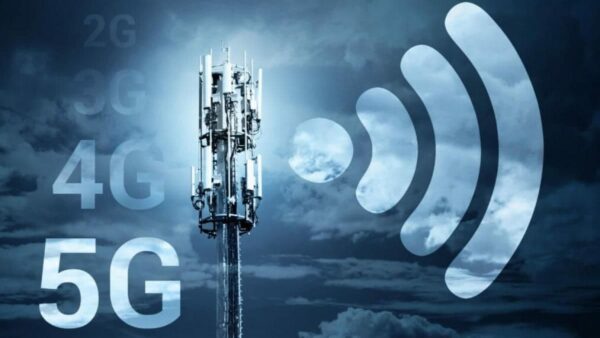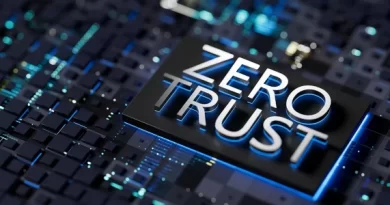Unleashing the 5G Network: The Future of Connectivity and Innovation
The arrival of 5G is more than just an incremental upgrade in wireless technology it’s a monumental shift that promises to redefine the very fabric of connectivity. As 5G networks begin to blanket the globe, their impact extends far beyond faster download speeds. This next-generation technology is poised to revolutionize industries, drive innovation, and reshape the way we live, work, and interact with the world. But what exactly sets 5G apart, and how will it serve as a catalyst for the next wave of technological advancements?
The Dawn of a New Connectivity Era:
5G, short for fifth-generation wireless technology, is not merely an evolution of 4G it’s a transformative leap that brings a whole new dimension to digital communication. While 4G LTE has been the backbone of the smartphone era, enabling a boom in mobile apps, social media, and on-the-go streaming, 5G is designed to support the connected world of tomorrow. It’s the foundation upon which smart cities, autonomous transportation, and the vast Internet of Things (IoT) will be built.
The speed of 5G is one of its most talked-about features, and for good reason. With the potential to deliver data speeds up to 100 times faster than 4G, 5G enables experiences that were previously unimaginable. Whether it’s downloading a 4K movie in seconds or enjoying seamless, lag-free gaming on the go, 5G’s speed promises to enhance our digital lives in ways that 4G simply couldn’t.
But the true power of 5G lies beyond raw speed. It’s about creating a network that’s not only faster but also smarter, more efficient, and more responsive. This is where the concept of ultra-low latency comes into play.
Ultra-Low Latency: Redefining Real-Time Interaction
Latency, the time it takes for data to travel between two points, has been a critical factor in the performance of digital networks. With 4G, latency typically hovers around 50 milliseconds—fast enough for most applications but not nearly sufficient for the emerging technologies of tomorrow. Enter 5G, with its promise of reducing latency to as little as one millisecond. This near-instantaneous communication opens up a world of possibilities for applications that require real-time responsiveness.
Take autonomous vehicles, for example. The success of self-driving cars hinges on their ability to make split-second decisions, reacting to their environment in real time. With 5G, vehicles can communicate with each other, traffic lights, and road sensors with minimal delay, creating a safer and more efficient transportation system. The impact of such advancements could lead to a dramatic reduction in traffic accidents, optimized traffic flow, and even new forms of mobility services.
In the realm of healthcare, 5G’s low latency could enable remote surgeries, where doctors perform procedures on patients thousands of miles away using robotic instruments. The data must travel almost instantaneously to ensure precision and safety, something that only 5G can provide. This could revolutionize access to healthcare, particularly in remote or underserved areas, by allowing specialists to provide critical care regardless of geographical constraints.
The Internet of Things (IoT) Revolution on 5G Steroids:
While the IoT has been steadily growing with the advent of 4G, the true potential of connected devices will be unlocked with 5G. The network’s ability to support up to a million devices per square kilometer means that we are on the cusp of a world where virtually everything is connected—from everyday household items to complex industrial machinery.
Imagine a smart city where streetlights, traffic signals, waste management systems, and public transport are all interconnected, sharing data in real time to optimize efficiency and reduce costs. Or consider the concept of smart homes, where appliances, security systems, and energy management tools all work together seamlessly to enhance comfort, safety, and energy efficiency.
In agriculture, 5G-powered IoT devices could monitor soil moisture, track weather conditions, and even control irrigation systems with pinpoint accuracy, leading to higher crop yields and more sustainable farming practices. In manufacturing, connected factories could leverage real-time data to improve production processes, predict maintenance needs, and reduce downtime, ultimately driving greater productivity and profitability.
Overcoming the Challenges of 5G Deployment:
Despite the immense potential of 5G, its global rollout is not without challenges. The infrastructure required to support 5G is significantly different from previous generations. Unlike 4G, which relies on large cell towers spaced relatively far apart, 5G requires a denser network of smaller cells. These small cells must be placed closer together—often on streetlights, buildings, or other urban structures—to ensure consistent coverage and high-speed connections.
This densification of the network presents logistical and regulatory hurdles. Cities must navigate the complexities of permitting and installing these new cells, while also addressing concerns about the visual impact on urban landscapes. Additionally, there’s the challenge of ensuring that rural and remote areas are not left behind in the 5G revolution. Bridging the digital divide will require innovative solutions to extend 5G coverage beyond densely populated urban centers.
Security is another critical concern. As 5G networks enable more devices to connect and share data, the potential for cyber threats also increases. Ensuring the security and privacy of data transmitted over 5G networks will be paramount, requiring robust encryption methods and continuous monitoring for vulnerabilities.
The Broad Impact of 5G: Redefining Industries and Daily Life:
As 5G continues to roll out, its impact will be felt across virtually every industry. For businesses, 5G offers the opportunity to innovate at an unprecedented scale. Companies can develop new products and services that leverage the capabilities of 5G, from immersive virtual and augmented reality experiences to advanced robotics and AI-driven applications.
In the entertainment industry, 5G could revolutionize how content is consumed. Imagine virtual concerts where fans around the world can experience performances in real time, as if they were right there in the front row. Or consider the potential for interactive, multi-sensory experiences in gaming and movies, where users are fully immersed in digital worlds thanks to the high bandwidth and low latency of 5G.
For consumers, the everyday benefits of 5G will be both profound and subtle. From smarter homes to more efficient transportation, from personalized healthcare to enhanced educational tools, 5G will touch every aspect of daily life, making it more connected, convenient, and responsive.
Envisioning the Future: The Long-Term Impact of 5G
Looking to the future, the full potential of 5G is still unfolding. As more devices, systems, and services come online, the capabilities of 5G will continue to expand. It’s not just about what 5G can do today, but about the doors it will open for tomorrow’s innovations.
We may see the rise of new industries built entirely around the possibilities that 5G creates. Technologies like autonomous drones, remote-controlled machinery, and next-gen AI could become commonplace, driven by the reliability and speed of 5G networks. The boundaries between the digital and physical worlds will blur even further, leading to a more integrated and interactive experience in both personal and professional realms.
In conclusion, 5G is not just a new chapter in the story of connectivity—it’s the beginning of a new era. The impact of 5G will be far-reaching, transforming industries, enhancing everyday experiences, and enabling a future where the world is more connected than ever before. As we continue to explore and harness the power of 5G, one thing is clear: the revolution has only just begun.
FAQs:
1. What is 5G, and how does it stand out from 4G?
5G, or the fifth generation of wireless technology, represents a major leap from 4G LTE. It delivers unprecedented speeds, dramatically lower latency, and supports a vast number of connected devices. While 4G brought enhancements in mobile broadband, 5G is designed to underpin the next wave of innovations, from smart cities to self-driving cars.
2. How does 5G’s speed compare to that of 4G networks?
5G boasts speeds that can be up to 100 times faster than 4G, enabling near-instantaneous downloads and real-time streaming. However, actual performance may vary based on network conditions, signal strength, and the specific 5G spectrum used (low-band, mid-band, or high-band).
3. What advantages does 5G offer to consumers?
For consumers, 5G means ultra-fast internet speeds, minimal lag, and more reliable connections, even in densely populated areas. This results in quicker downloads, smoother streaming, and improved performance for a growing range of smart devices and applications.
4. How will 5G transform sectors like healthcare and transportation?
In healthcare, 5G enables cutting-edge innovations such as remote surgeries and continuous patient monitoring through smart devices. For transportation, 5G facilitates real-time communication between autonomous vehicles and infrastructure, enhancing safety and efficiency on the roads.
5. What are the different 5G spectrum types, and how do they affect network performance?
5G operates across three spectrum bands: low-band, mid-band, and high-band (millimeter wave). Low-band offers broad coverage and penetration but slower speeds, mid-band balances speed and coverage, while high-band delivers the fastest speeds with more limited range and penetration. Each band serves different performance needs and conditions.
6. Are there any health concerns related to 5G technology?
Current research, including reviews from organizations like the World Health Organization and the Federal Communications Commission, indicates that 5G is safe within established guidelines. Nonetheless, ongoing research continues to monitor potential health impacts of 5G exposure.
7. How does 5G enhance the Internet of Things (IoT)?
5G elevates IoT by allowing up to a million devices to connect per square kilometer. This boosts the efficiency and reliability of interconnected devices, leading to smarter urban environments, more intelligent home systems, and advanced industrial processes.
8. What obstacles are faced in the deployment of 5G networks?
Deploying 5G involves overcoming challenges such as installing a dense network of small cells, high infrastructure costs, navigating regulatory issues, and addressing concerns about visual impact and environmental effects. Ensuring that rural and underserved areas also benefit from 5G is another significant challenge.
9. Will 5G replace technologies like Wi-Fi?
5G is designed to complement, not replace, Wi-Fi. While 5G offers high-speed mobile connectivity, Wi-Fi remains essential for home and business networks. Together, 5G and Wi-Fi will provide comprehensive and versatile connectivity solutions.
10. What can consumers expect regarding 5G coverage and availability?
5G coverage is rapidly expanding but varies by location and provider. Urban areas are likely to experience quicker and more extensive deployment, while rural areas may see slower rollouts. Consumers should anticipate a gradual increase in 5G availability and coverage as the network infrastructure evolves.




